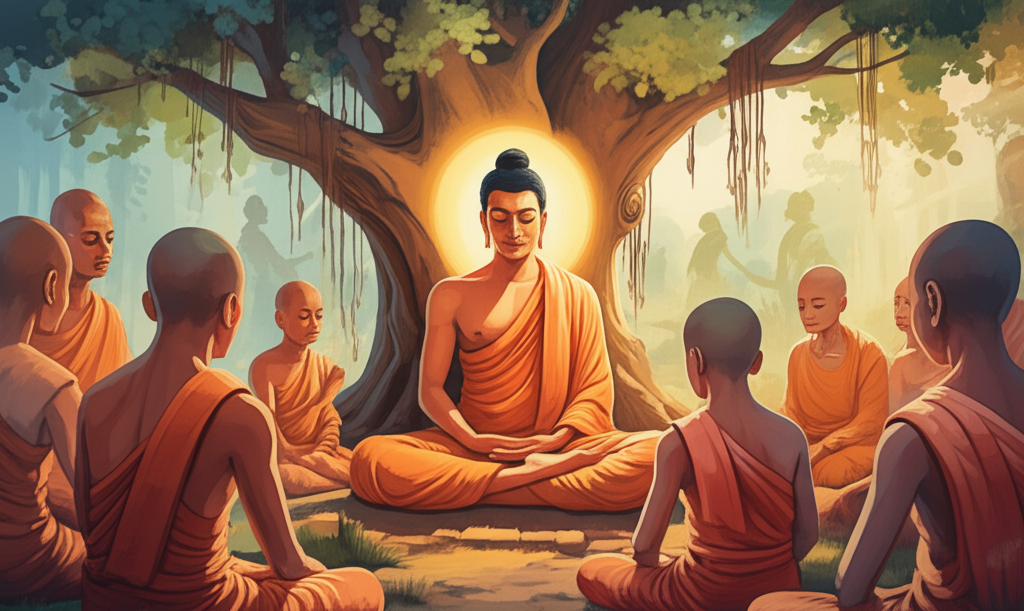
The Teacher in Jetavana told a story about a monk who had stopped trying to be good. The Teacher asked him, “Is it true you’ve stopped trying?” The monk said, “Yes.” Then the Teacher said, “A long time ago, smart people tried really hard and became kings!” And he told this story:
Long, long ago, King Brahmadatta ruled Benares. His wife had a baby boy, who was the Bodhisatta. On his birthday, they asked 800 wise men about his future. The wise men looked at the baby and said:
“Your son is a good boy! When you pass away, he’ll be king. He’ll be famous for being great with swords, spears, bows, axes, and shields. Everyone in India will know him!”
They named him the Prince of the Five Weapons because of what the wise men said.
When he was about sixteen, the King told him, “Son, it’s time to finish your learning.”
The Prince asked, “Who will teach me?”
The King said, “Go to Takkasila, in Candahar. There’s a famous teacher there. Give him this money as a gift.” He gave the Prince a thousand coins.
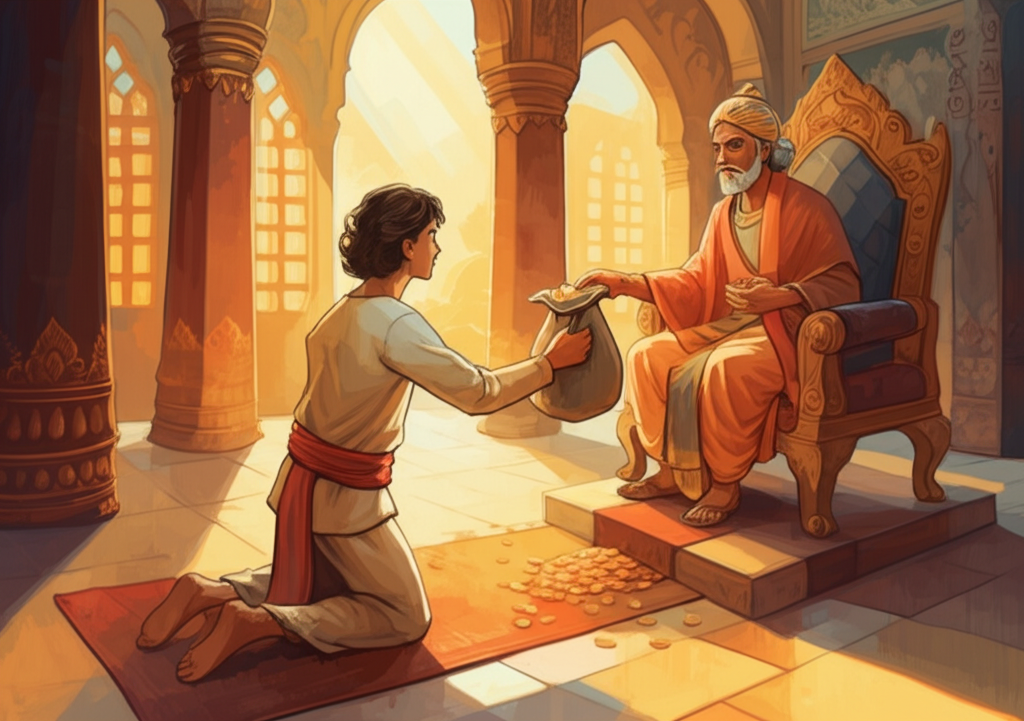
The Prince went to the teacher and learned a lot. The teacher gave him the Five Weapons as a present. The Prince said goodbye and started his trip back to Benares, carrying his weapons.
On his way, he came to a forest where a scary Demon with Matted Hair lived. Some people at the edge of the forest warned him:
“Hey, watch out! There’s a Demon in there with crazy hair! He hurts anyone he sees!” They tried to stop him, but the Prince was brave and walked right in, like a fearless lion.
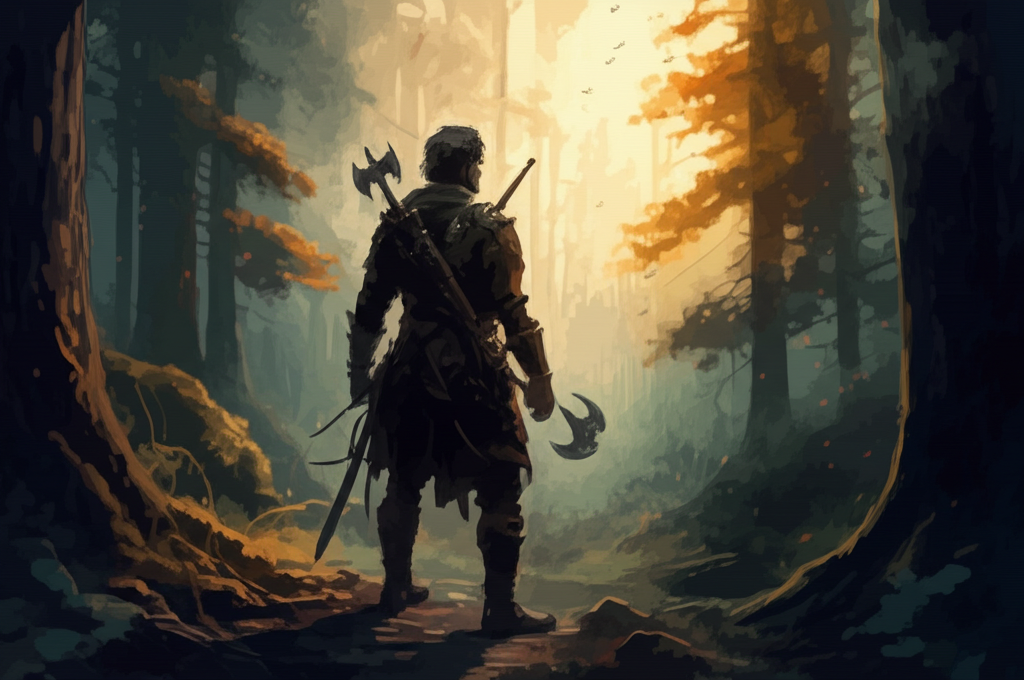
In the middle of the forest, the Demon showed up! He was as tall as a tree, with a head as big as a house, eyes like giant plates, and bumpy teeth. He had a hawk’s face and colorful tummy, with blue hands and feet.
“Where do you think you’re going?” he roared. “Stop! You’re my dinner!”
The Prince said, “Demon, I’m not scared of you. I’m warning you to stay away! I have a poisoned arrow that will knock you down!” He put a poisoned arrow in his bow and shot it. The arrow stuck in the Demon’s hair. He shot fifty arrows, and they all stuck in the Demon’s hair. The Demon just snapped them off and threw them down. Then he walked up to the Prince.
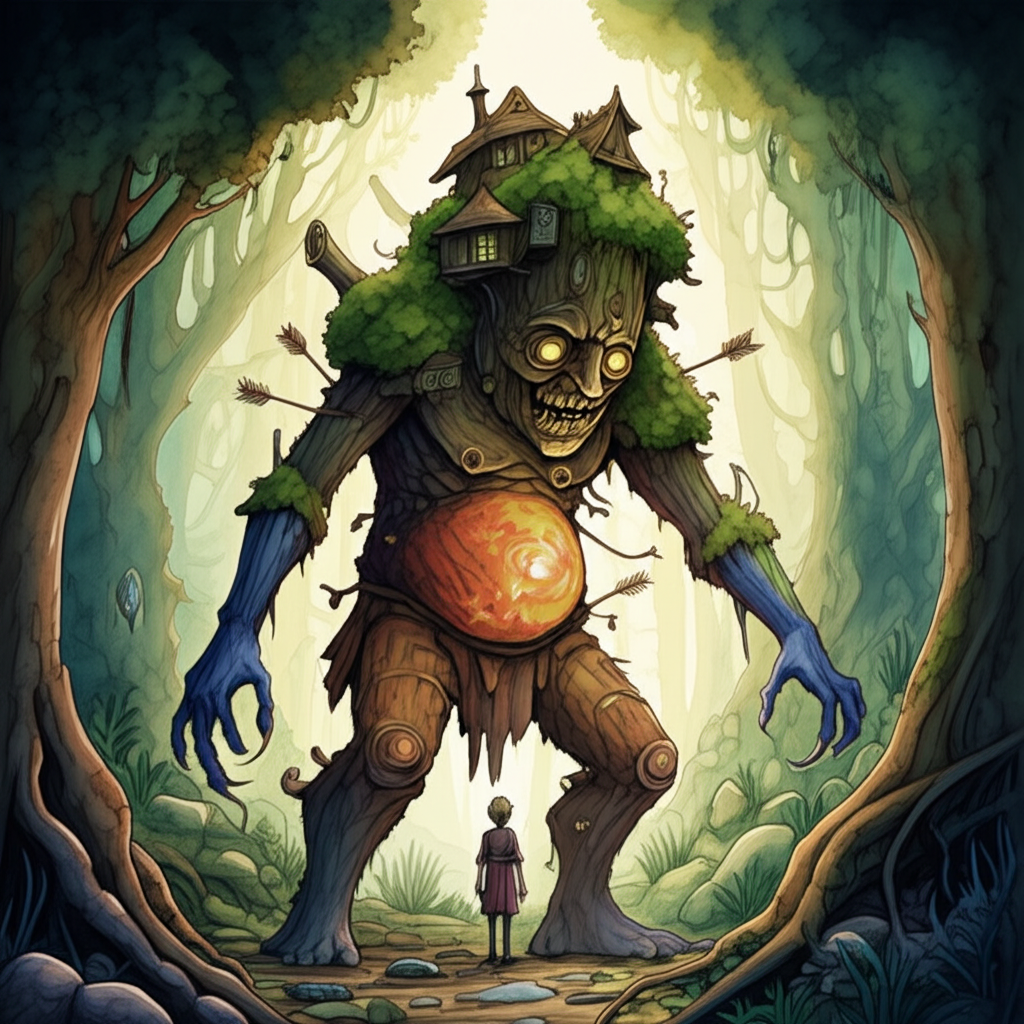
The Prince pulled out his sword and swung it at the Demon. The sword got stuck in the Demon’s hair too! He hit him with his spear, and it stuck! He hit him with his club, and it stuck too!
The Prince realized all his weapons were stuck. “Demon!” he yelled. “Have you never heard of me, the Prince of the Five Weapons? I didn’t trust just my weapons. I’m going to smash you into dust!”
He punched the Demon with his right hand. It stuck! He punched him with his left hand, and it stuck too! He kicked him with his right foot, and it stuck! Then he kicked with his left, and it stuck too! Then he bumped him with his head, shouting, “I’ll grind you to powder!” And his head stuck fast too!
So, the Prince was stuck in five places, hanging in the air! But he wasn’t scared, not even a little bit.
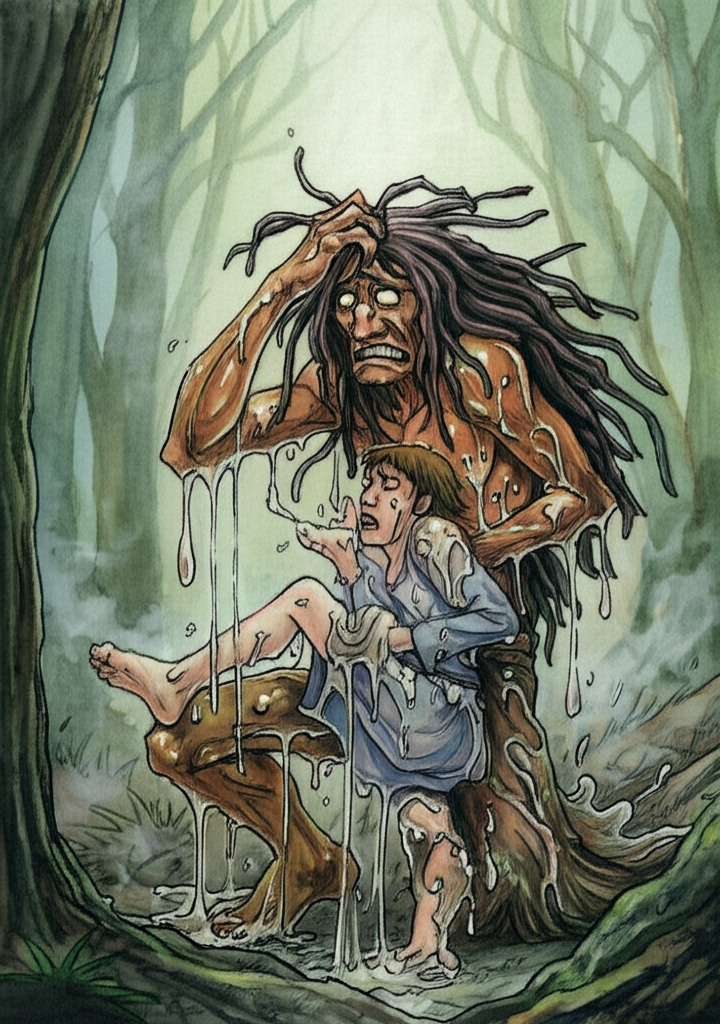
The Demon thought, “Wow, this guy is strong! He’s caught by a scary Demon like me, but he’s not afraid. I’ve never seen anyone like this. Why isn’t he scared?” He couldn’t eat him, so he asked, “Hey, why aren’t you scared to death?”
The Prince replied, “Why should I be afraid? You can only die once! Besides, I have a thunderbolt in my belly! If you eat me, it will break you into tiny pieces and kill you! That’s why I’m not scared!” (He meant the smartness he had learned.)
The Demon thought, “He’s right! Even a little bit of him would be too much for me. I’ll let him go!” So, he let the Prince go, saying:
“You’re a brave man! I won’t eat you. I’m setting you free! Go back to your friends and family!”
The Prince said, “I’ll go. But you were a mean Demon because you did bad things in your past life. If you keep being bad, things will get worse. Now that you’ve seen me, you should be good. Hurting others causes you to be born as an animal, or a ghost, or a monster. And if you’re born as a person, your life will be short.”
He told the Demon all about the bad things that happen when you’re mean and the good things that happen when you’re kind. He scared the Demon a little and taught him to be good. He made him promise to worship the special spirit of the forest. Then he left.
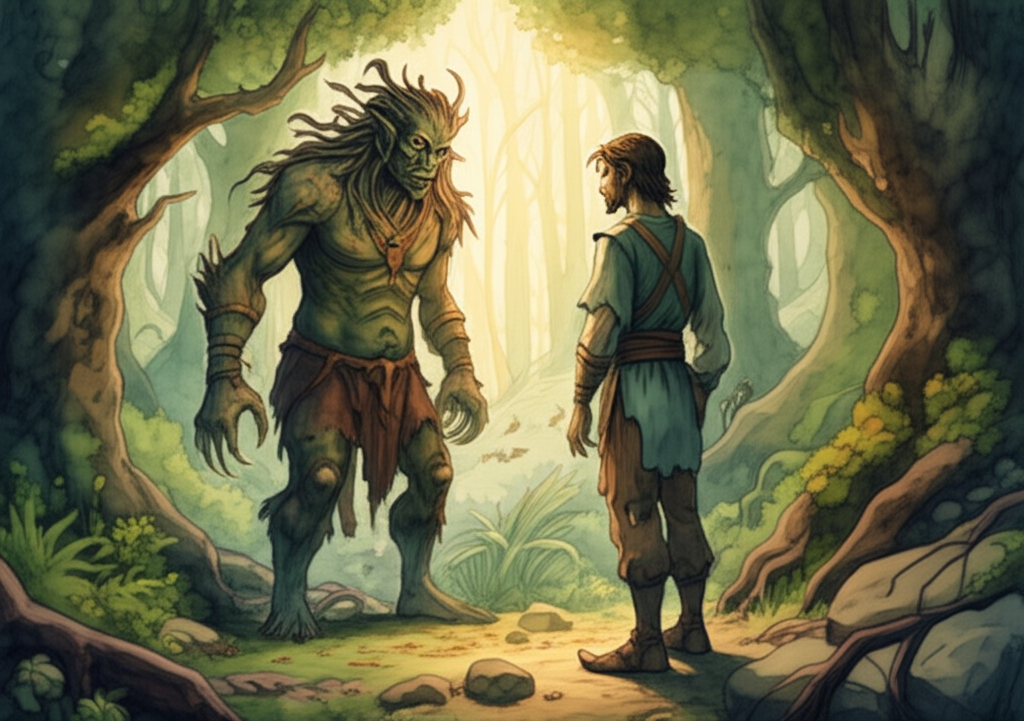
At the edge of the forest, he told everyone what happened. Then he went on to Benares, carrying his Five Weapons. Later, he became king and ruled well. He gave to the poor and did good things. When he died, he went to a good place because of his good deeds.
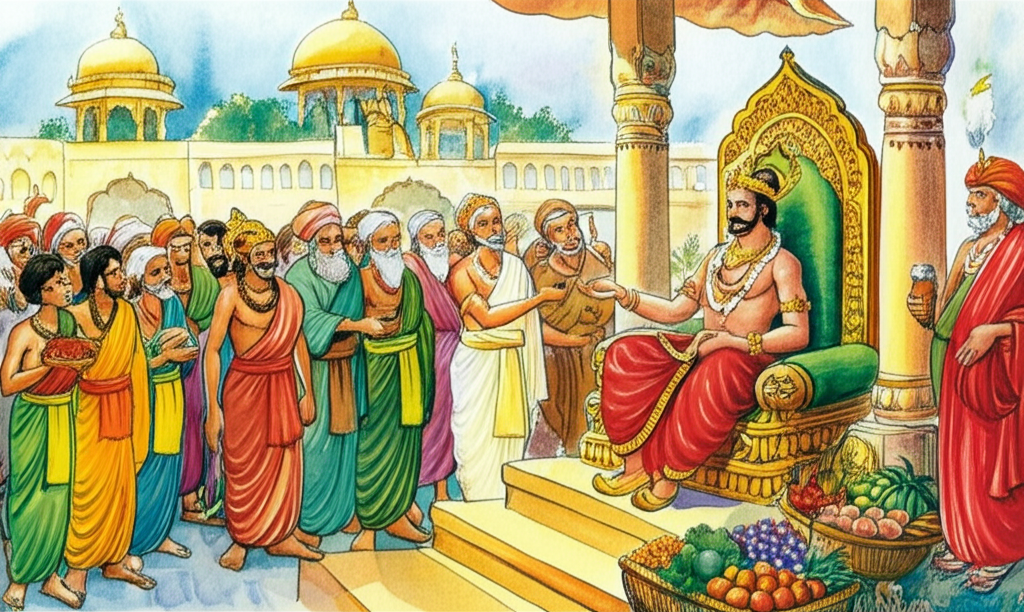
When the Teacher finished the story, he felt very wise and said this:
Someone who doesn’t want too much, Someone who is good, Will break free from bad things, And live a good life.
Then the Teacher told them that Angulimala was the Demon and he himself was the Prince of the Five Weapons!